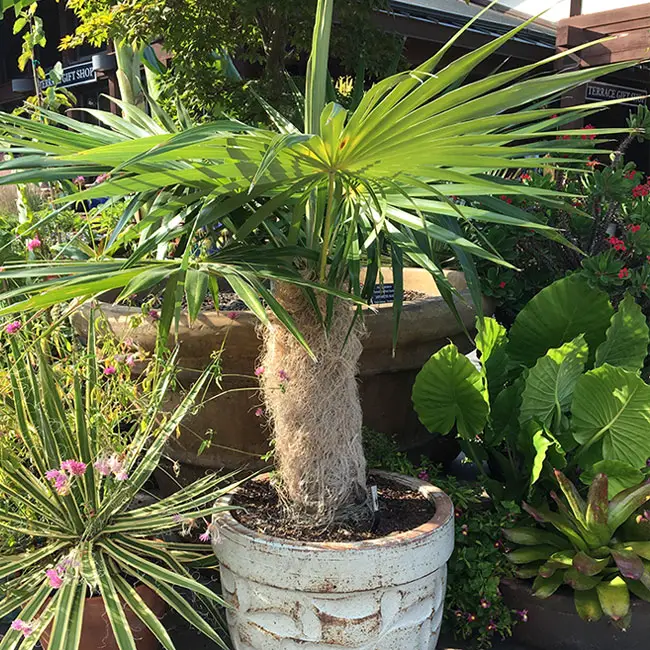
The Old Man Palm Tree, scientifically known as Coccothrinax crinita, is renowned for its striking trunk, covered with a thick layer of wool-like fibers. This palm is exceedingly rare, typically found only in collectors’ gardens, which contributes to its high cost. It is often cultivated for ornamental purposes.
The Old Man Palm is native to the Caribbean region, specifically to islands such as Cuba, the Bahamas, and the Turks and Caicos Islands. It thrives in the tropical and subtropical climates of these areas.
Quick Facts:
| Scientific name: | Coccothrinax crinita |
| Common names: | Old Man Palm, Thatch Palm, Guano Barbudo, Guano Petate, Palma Petate. |
| Origin: | Native to Cuba. |
| Growth Rate: | Slow. Up to 10-15 ft tall and 1-5ft wide. |
| Cold Tolerance: | USDA Zones 10b (35 to 40 F) to 11 (above 40 F). |
| Light Req: | Partial shade to Full sun. |
| Water Req: | Moderate. |
| Soil Req: | Widely adaptable. |
| Fruit: | Yes. Purple. |
| Propagation: | By seed, germinating in 6 months. |
Old Man Palm Identifying Characteristics
The trunk is slender, measuring a mere 8 inches in diameter, yet it appears larger due to the thick hair-like covering. Its resemblance to an old man’s beard is what earned it the name “Old Man Palm.”
This unique tree bears 15-25 circular leaves directly from its trunk, with palmate, or fan-shaped, stiff, spirally arranged foliage that reaches about 4-5 feet in diameter.
These leaves are supported by short, 2-foot-long unarmed petioles and display bright green coloring on the upper side and a silvery-gray hue on the underside.
Old Man Palm Flowers and Fruits
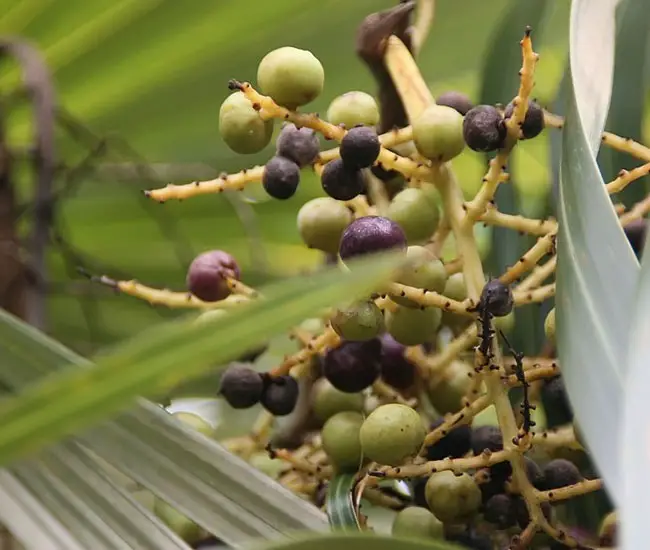
During the summer, the Old Man Palm produces yellow flowers, which are held by 5-foot-long stalks that extend beyond the length of the leaves.
These flowers are bisexual, with both male and female reproductive organs on the same plant. They are succeeded by dark purple fruit, approximately 1 inch in diameter, giving the tree additional visual interest.
How To Care For Old Man Palm
Coccothrinax crinita is a slow-growing palm that can reach heights of 10-20 feet and a width of 1-5 feet. It typically takes around 10 years for this evergreen beauty to attain a height of 5 feet.
Mature Old Man Palm Trees can withstand cold temperatures down to 35°F. They thrive in USDA Zones 10b (with temperatures between 35 and 40°F) to 11 (above 40°F).
This palm tree flourishes in partial shade or full sun, making it an excellent choice for planting along the seashore due to its impressive drought and salt tolerance. It prefers well-drained, moist soil.
To prevent nutritional deficiencies, it is advisable to apply high-quality palm fertilizer with a continuous-release formula twice a year during the growing season.
Propagation of the Old Man Palm Tree is typically done by seed.
Old Man Palm Pictures
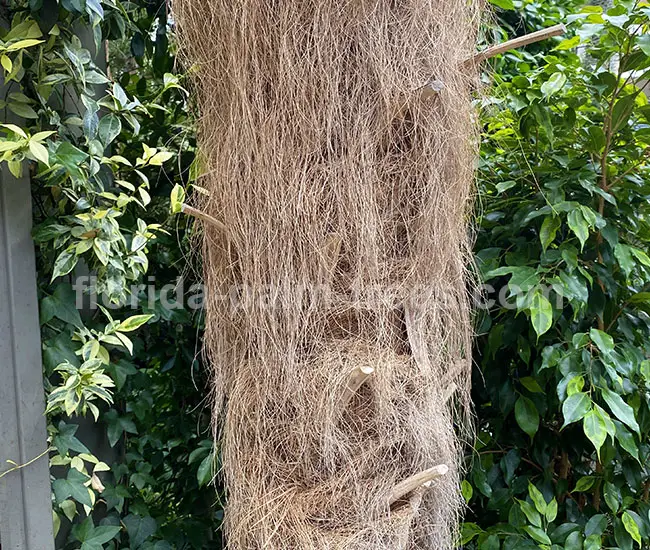
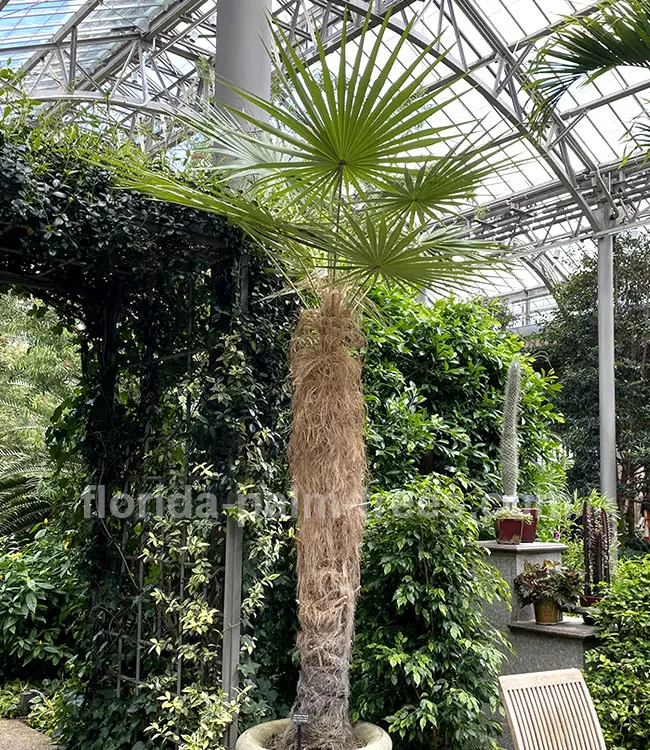
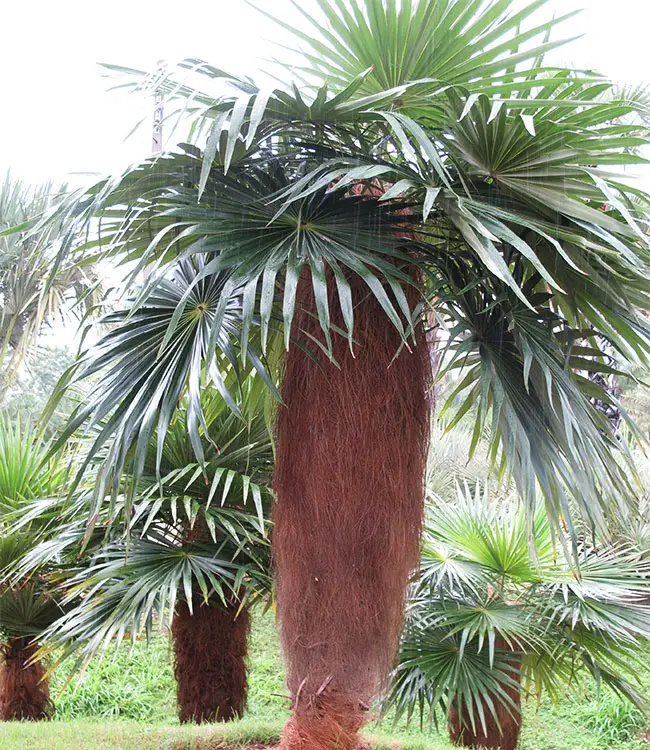
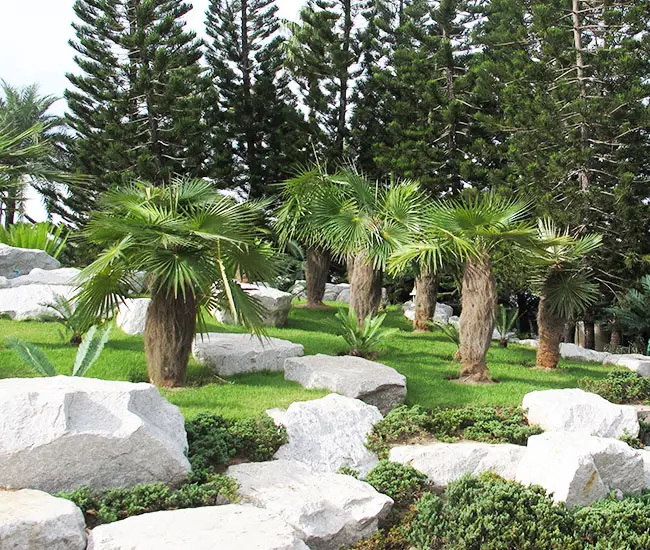
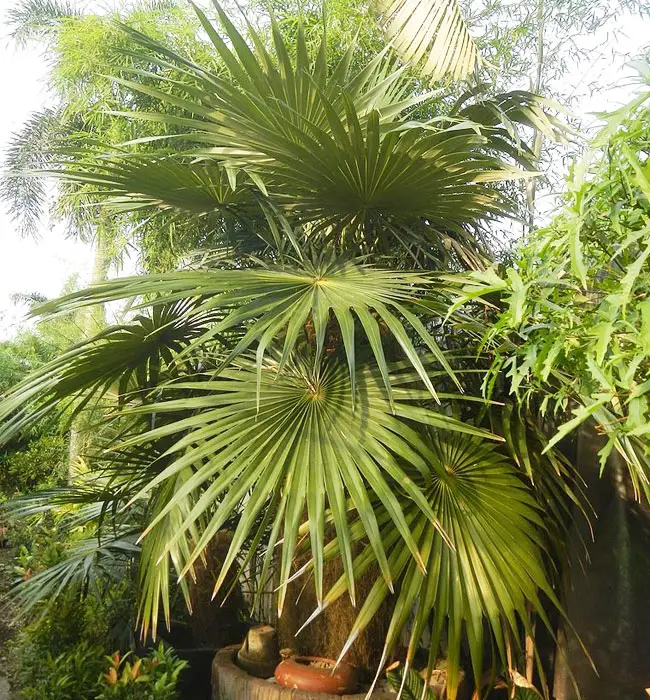
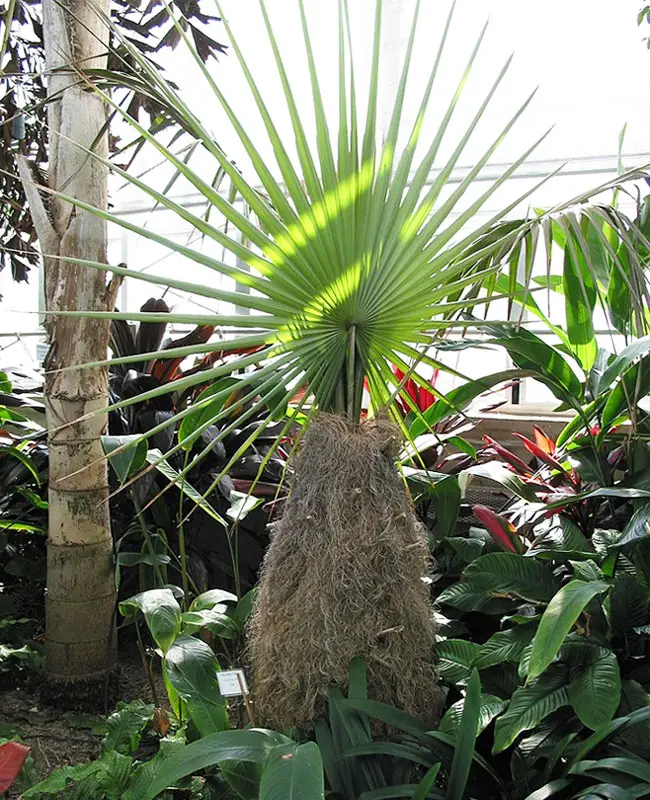
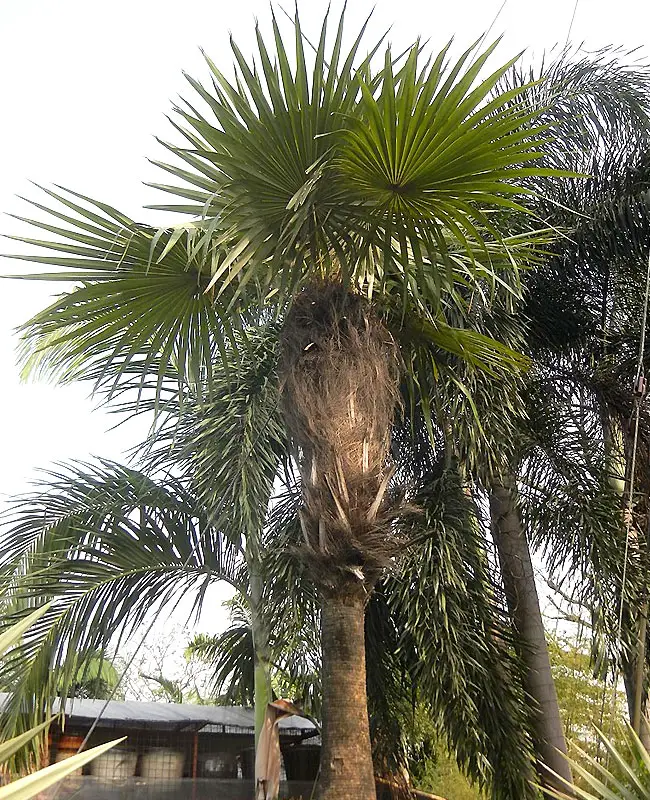
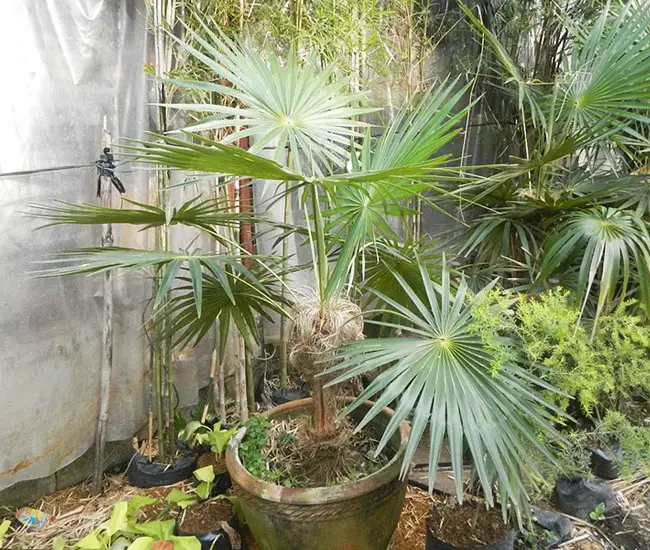
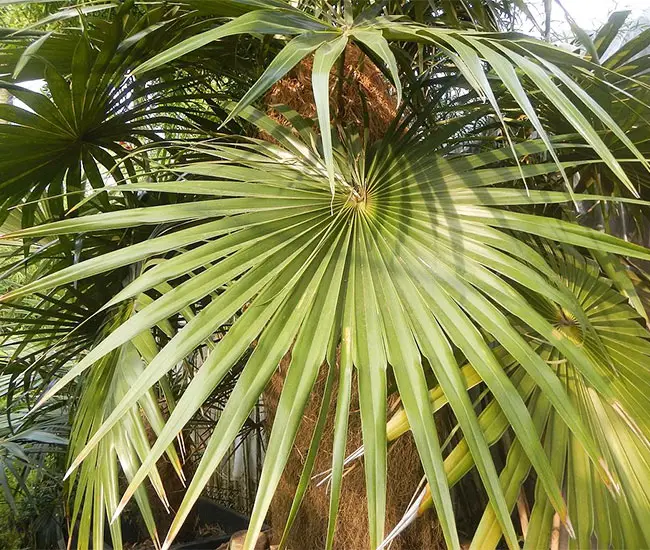
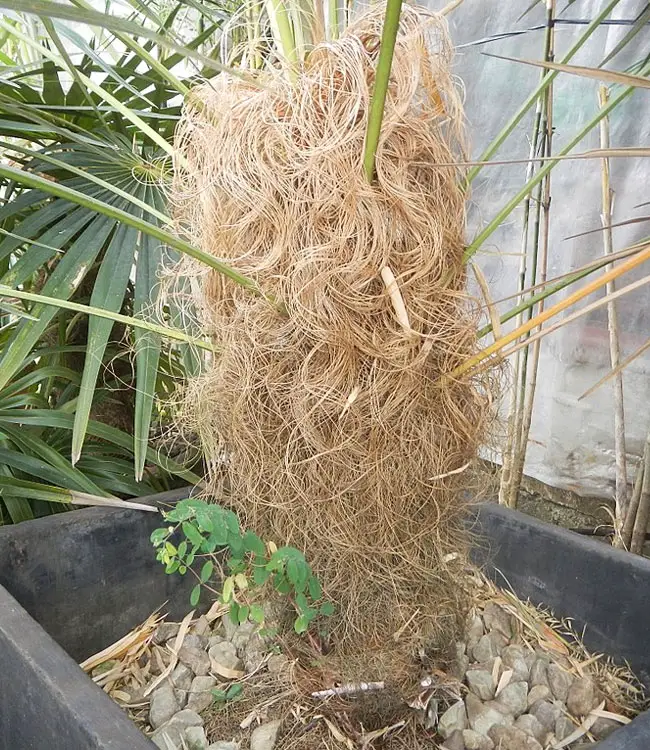
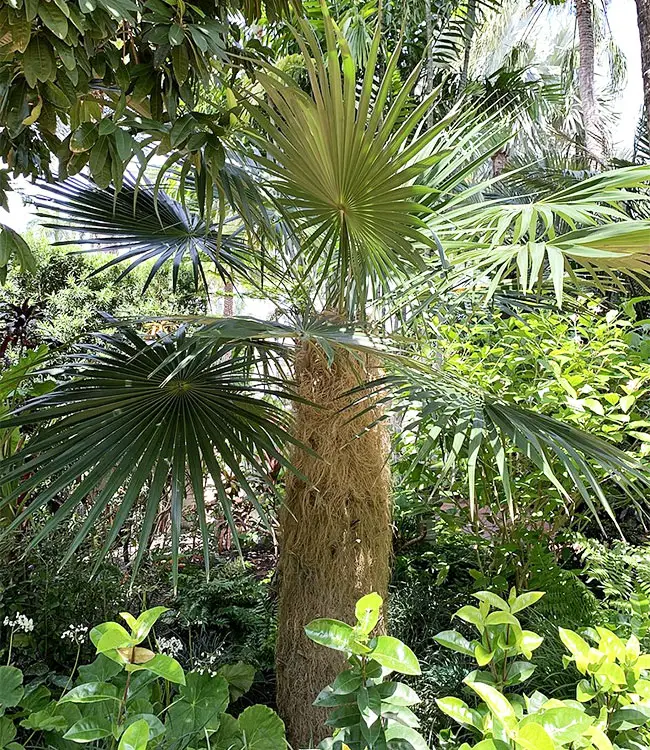
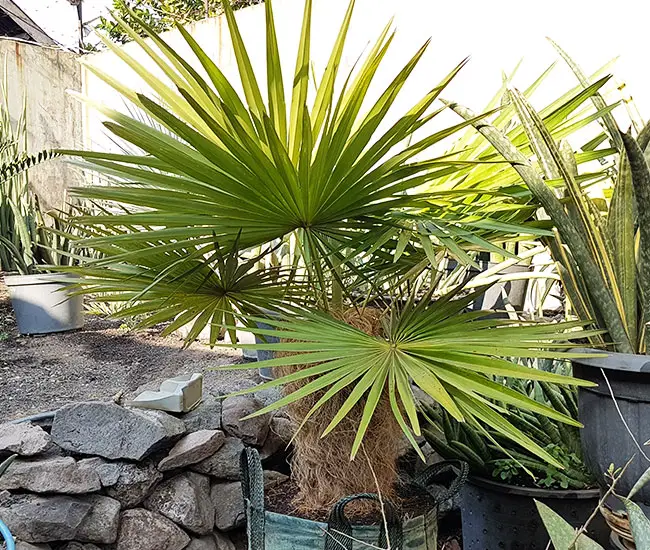
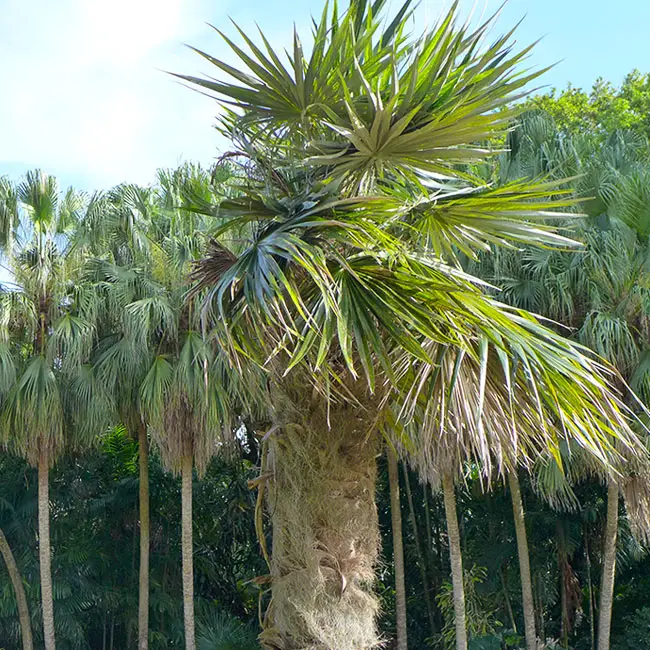
More information can be found on EDIS site. Buy This Palm Tree »

Good day,
I am interested in the old mans palm tree, the small one. I would like to know a little more about the possibilities for importing this tree in Surinam. I’m looking for a tree with a big beard.
Sincerely,
Es Devie
Surinam
My old man palm has light green fronds, we have had a colder than usual winter, but no frost, it was really lush green last year. What’s going on?
We purchased an Old Man Palm from our local Lowes. I live in Apollo Beach, Fl. It is in a pot outside in full sun. It has gotten plenty of rain this summer and when not raining we have a sprinkler system. We have feed it palm food and Magnesium.
It is fifteen inches tall and in a round fourteen inch across pot. It does grow new leaves, but the mature leaves are yellow
and nothing seems to change that. Should we take it out of the pot, it does not seem root bound, and plant it ?
Your help is greatly appreciated.
Thank You